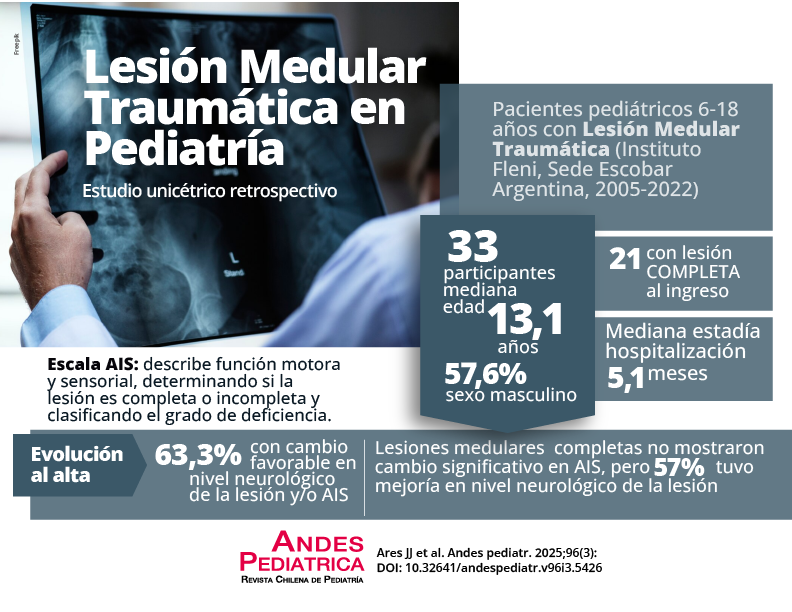Abstract
Traumatic spinal cord injury (TSCI) is uncommon in pediatrics but has a significant negative impact on children’s quality of life. Currently, there is limited literature documenting neurological recovery in this population within the first few months after a TSCI.
Objective: To describe changes in the neurological level of injury (NLI) and the ASIA Impairment Scale (AIS) score in pediatric patients following TSCI. A secondary objective was to explore associations between clinical variables and changes in NLI and AIS.
Patients and Method: Observational, analytical, and retrospective study. Patients included were those aged 6 to 18 years diagnosed with TSCI and admitted between 2005 and 2022 at Centro de Rehabilitación Fleni Escobar. The primary variables were a change in the NLI and/or the AIS at discharge. Secondary variables evaluated were demographic data, injury etiology, vertebral involvement, associated injuries, surgery, and time of evolution.
Results: The sample included 33 participants, with a mean age of 13.1 (SD 3.1) years. 57.6% were male and 21 individuals had complete TSCI on admission. At discharge, 63.6% of patients experienced favorable changes in NLI and/or AIS: 39.4% in NLI only, 6.1% in AIS only, and 18.2 % in NLI-AIS. Complete TSCI showed no significant changes in AIS; however, 57% of these individuals showed improvement in at least one NLI. When analyzing the relationship between clinical variables and changes in AIS, there were significant differences only according to injury severity (p = 0.02), with changes in 9.5% (2/21) of complete injury and 50% (6/12) of incomplete injury.
Conclusion: Greater changes were observed in NLI compared to AIS scores. Although patients with complete TSCI are unlikely to experience changes in AIS, they may still show improvement in at least one NLI, which could positively impact functional outcomes.

This work is licensed under a Creative Commons Attribution 4.0 International License.
Copyright (c) 2025 Revista Chilena de Pediatría






